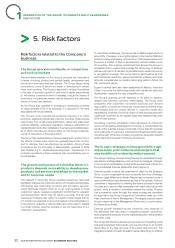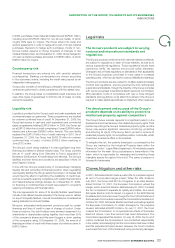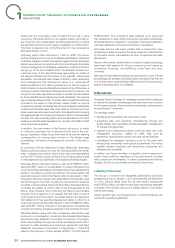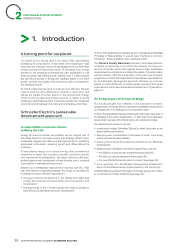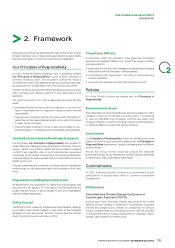APC 2009 Annual Report Download - page 40
Download and view the complete annual report
Please find page 40 of the 2009 APC annual report below. You can navigate through the pages in the report by either clicking on the pages listed below, or by using the keyword search tool below to find specific information within the annual report.
2009 REGISTRATION DOCUMENT SCHNEIDER ELECTRIC38
SUSTAINABLE DEVELOPMENT
2INTRODUCTION
>
1. Introduction
A turning point for our planet
Our planet is at a turning point in its history. After exponentially
increasing its consumption of abundant and inexpensive fossil
fuels over two centuries, the world has awakened to fi nd that these
energy sources are becoming scarce. At the same time, energy
demand in the emerging economies has risen signifi cantly to fuel
these countries’ astonishing growth. What’s more, 1.6billion people
are still without access to energy and justifi ably aspire to the same
goods, services and quality of life enjoyed by their counterparts in
the developed world.
All of this means that we need to produce more with less. We also
need to produce more effectively to optimise consumption and
reduce the impact of human activity on the environment. Energy,
which is both a public and private resource, is clearly a central
challenge in global development. It will play a pivotal role in balanced
economic growth between the mature and emerging economies.
Schneider Electric’s sustainable
development approach
A responsible corporate citizen:
walkingthetalk
Energy and environmental responsibility are an integral part of
Schneider Electric’s corporate culture and strategy. What’s more,
sustainable development offers a critical opportunity for unleashing
employees’ enthusiasm, speeding growth and differentiating the
Company.
A new balance needs to be struck among often contradictory
objectives in areas like population growth, economic growth
and environmental stewardship. Schneider Electric’s skill-sets,
global presence and exceptional cultural diversity give it a special
responsibility in addressing these issues.
Backed by a strategically repositioned business portfolio, R&D
plan and sales and marketing strategy, the Group is committed to
providing innovative, effi cient responses for:
•bringing products and solutions to the market that waste less
energy and promote environmentally sound production and
consumption;
•bringing energy to the 1.6billion people who have no access to
electricity and sustainable economic development.
In 2002, Schneider Electric published a set of guidelines entitled Our
Principles of Responsibility to give all team members a common
framework. These guidelines were updated in 2009.
The Planet & Society Barometer included in Schneider Electric’s
company programmes since 2005 has allowed the Group to
bring its corporate community together around major sustainable
development commitments and share the results of its action plans
with all partners. With the introduction of the new One company
programme in 2009, Schneider Electric has defi ned new ambitions
for its sustainable development approach, following up on its ten
targets for 2005-2008 with 13 environmental, economic and social
improvement plans (see Sustainable Development Organisation ,
page 41 ).
An integral part of Group strategy
By including targets and indicators in its successive company
programmes , Schneider Electric has made sustainable development
an integral part of its strategy and priority action plans.
In 2008, the Sustainable Development Department was made part of
the Strategy & Innovation D epartment —a clear sign that sustainable
development guides both internal policy and external strategy.
The Department’s missions include:
•continuously raising Schneider Electric’s overall corporate social
responsibility performance;
•deploying new commitments in the areas of social, community
and environmental responsibility;
•ensuring that internal and external commitments are effectively
implemented;
•designing and managing innovative programmes , such as:
–the BipBop energy access programme (see page 66 ),
–the Group’s carbon assessment (see page 46 ),
–the new Ethical Dynamics code of conduct (see page 39 );
•more generally, the Sustainable Development Department
supports all initiatives with a positive impact on the community.
A Sustainable Development Strategy Committee was set up in 2008
to coordinate all of these initiatives (see page 43 ).




